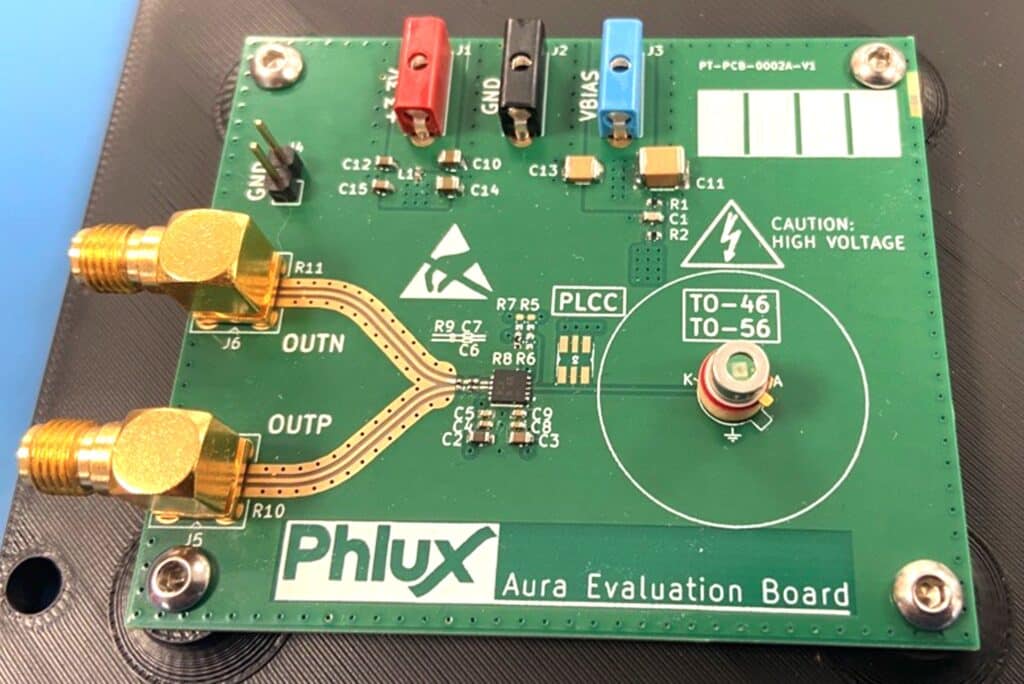The new evaluation board accelerates development of 1550 nm infrared systems, enabling precise performance benchmarking and ultra-low noise measurements for LiDAR, optical networks, and rangefinding.

A new evaluation board designed for next-gen infrared systems promises to simplify and speed up the development of high-sensitivity 1550 nm photonic applications. Aimed at engineers working on laser rangefinders, optical communication systems, and LiDAR, the compact platform supports Phlux Technology’s Aura family of avalanche photodiodes (APDs), which boast up to 12 times greater sensitivity compared to traditional InGaAs detectors.
Measuring just 70 mm x 60 mm, the board integrates a MAX40661 commercial off-the-shelf (COTS) transimpedance amplifier and supports a range of key photodiode measurements—dark current, responsivity, NEP (Noise Equivalent Power), IRN (Input Referred Noise), impulse response, rise/fall times, and output swing. These parameters help designers benchmark performance against legacy or alternative solutions in real-world setups. The key features are:
- Protected DC-coupled input
- AC-coupled differential or single-ended outputs
- Standard 50-ohm SMA connectors
- Single +3.3 V DC power supply
- Preset Vbias for optimal responsivity
- Compatible with 250 MHz oscilloscope for time-domain analysis
Versatility is built in. The platform accepts both TO-46/TO-56 hermetically sealed APD packages and Ceramic PLCC6 SMD formats with quartz windows—making it easy to swap in and test different detectors, whether Phlux’s own or third-party devices. Beyond the standard evaluation board, the company also offers an ultra-low noise discrete amplifier design delivering NEP performance below 30 fW/√Hz. Paired with the Aura 200 µm APD, it supports bandwidths up to 75 MHz, making it ideal for long-range and defense-grade LiDAR systems where precision and low noise are critical.
At the heart of the platform is the company’s patented Noiseless InGaAs APD technology. By adding antimony (Sb) to the InGaAs material, the devices achieve high internal gain (up to 120+), superior temperature stability, and rapid large-signal recovery—pushing the boundaries of what’s possible in low-light IR detection.The board is available for order now, providing a fast track to evaluation and prototyping of infrared sensor applications.








